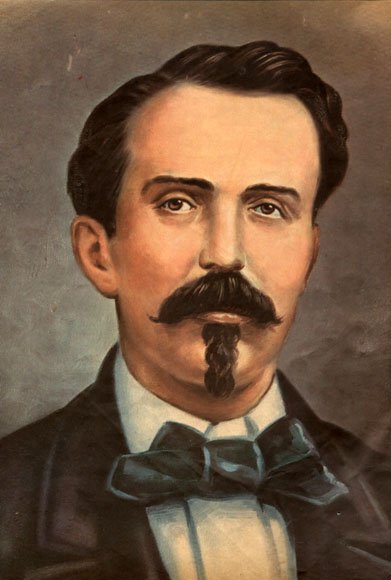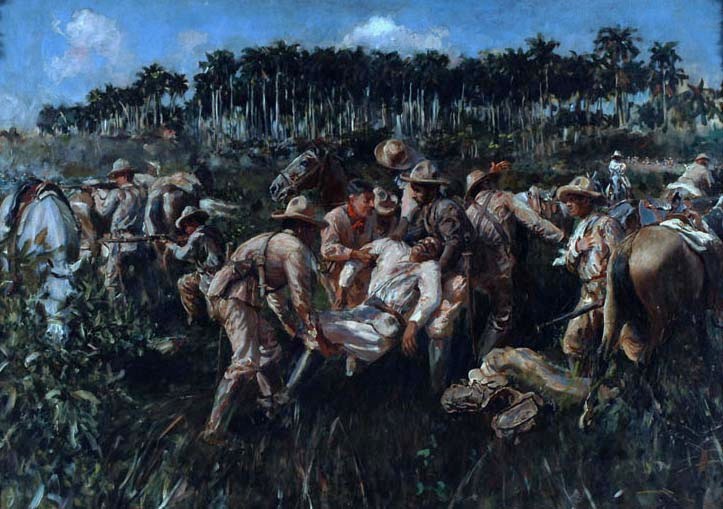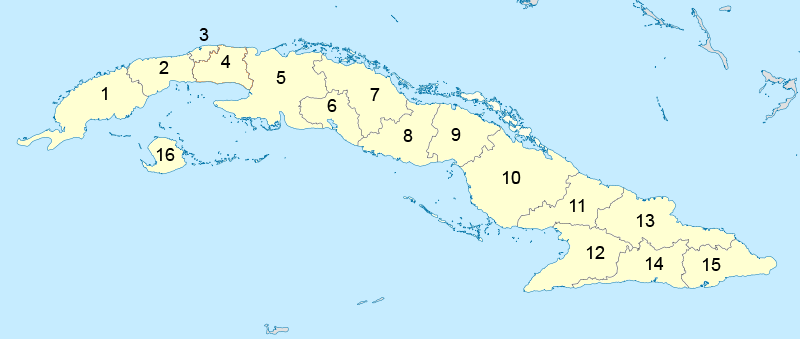|
Tuinicú (Encrucijada)
Tuinicú, also known as Tunicú is a small hamlet in Encrucijada, Cuba Geography Tunicú has the same name as the Tunicú River, nearby the town. History In March 1896 during the Cuban War of Independence, general Jose Larcet Morlot went to Encrucijada, the Sagua la Chica River, Paso Real, and the Tunicu River. To later enter Santa Clara, Vega Alta, and Calabazar de Sagua. In the Ten Years' War The Ten Years' War ( es, Guerra de los Diez Años; 1868–1878), also known as the Great War () and the War of '68, was part of Cuba's fight for independence from Spain. The uprising was led by Cuban-born planters and other wealthy natives. O ... rebels in Cinco Villas District went though San Gil, Ayagan, and Tunicu to then split up to get Encrucijada and Calabazar de Sagua. Transportation Tunicu is on a rail line starting in Santa Clara, going to Crucero Margot, to Luis Arcos Bergnes, Vega Alta, Canoa, Tuinicu, Constancia, Encrucijada, Mata, El Vaquerito, Aguada la P ... [...More Info...] [...Related Items...] OR: [Wikipedia] [Google] [Baidu] |
Cuba
Cuba ( , ), officially the Republic of Cuba ( es, República de Cuba, links=no ), is an island country comprising the island of Cuba, as well as Isla de la Juventud and several minor archipelagos. Cuba is located where the northern Caribbean Sea, Gulf of Mexico, and Atlantic Ocean meet. Cuba is located east of the Yucatán Peninsula (Mexico), south of both the American state of Florida and the Bahamas, west of Hispaniola ( Haiti/Dominican Republic), and north of both Jamaica and the Cayman Islands. Havana is the largest city and capital; other major cities include Santiago de Cuba and Camagüey. The official area of the Republic of Cuba is (without the territorial waters) but a total of 350,730 km² (135,418 sq mi) including the exclusive economic zone. Cuba is the second-most populous country in the Caribbean after Haiti, with over 11 million inhabitants. The territory that is now Cuba was inhabited by the Ciboney people from the 4th millennium BC with the Gua ... [...More Info...] [...Related Items...] OR: [Wikipedia] [Google] [Baidu] |
Sagua La Chica River
Sagua la Chica River is a river of northern Cuba, that flows through Villa Clara Province. Arising in the hills of Placetas, it flows north for 45 miles and empties into the Bay of Buena Vista. Villages Towns and villages near the Sauga la Chica include: * Falcón * El Berro * Crucero Carmita * Luis Arcos Bergnes (or Carmita) * Vega Alta * Canoa (or La Canoa) * Rincón (or El Rincón) * El Perico (or Perico) * Pavón * Las Bocas * Vega Redonda * Arroyo Naranjo * Sagua la Chica (town) * El Santo See also *Sagua la Grande River *List of rivers of Cuba This is an incomplete list of rivers of Cuba, arranged from west to east, by coast, with respective tributaries indented under each larger stream's name. North Coast *Mantua River * * *Almendares River * * * * *Yumurí River *Cormir River *Río d ... References *The Columbia Gazetteer of North America. 2000. Rivers of Cuba Geography of Villa Clara Province {{Cuba-river-stub ... [...More Info...] [...Related Items...] OR: [Wikipedia] [Google] [Baidu] |
Cifuentes, Cuba
Cifuentes () is a municipality and town in the Villa Clara Province of Cuba founded in 1819 and established as a municipality in 1919. Demographics In 2009 the municipality of Cifuentes had a population of 28,850, having dropped from 41,789 in 1976. With a total area of , it had a population density of . The municipality is divided into the barrios of Alacrán, Amaro, Barro, Cabecera Norte, Cabecera Sur, Este, Oeste and Sitio Grande. See also *Municipalities of Cuba The provinces of Cuba are divided into 168 municipalities or ''municipios''. They were defined by Cuban Law Number 1304 of July 3, 1976Fifth United Nations Conference on the Standardization of Geographical Names, Vol. II, published by the United N ... * List of cities in Cuba References External links Populated places in Villa Clara Province 1819 establishments in North America Populated places established in 1819 1819 establishments in Cuba 1819 establishments in the Spanish Empire {{Cuba-geo- ... [...More Info...] [...Related Items...] OR: [Wikipedia] [Google] [Baidu] |
Canoa, Cuba
Canoa or La Canoa is a small town in Villa Clara Province, Cuba, in the vicinity of the Sagua la Chica River. Nearby towns include Vega Alta, La Levisa, Chicharón, Paso Real, Santa Ana, La Doncella, and La Catalina. “Canoa” translates to “Canoe” in Spanish and shares the name with Arroyo La Canoa, a stream north of Canoa. History The Cuban War of Independence brought great concerns in Camajuaní which is in the border of Canoa. On October 30, 1895. Leoncio Vidal, a Cuban revolutionary with his troops attacked Fort La Vigía in Hills of Santa Fe nearby the Camajuaní, Santa Clara border and he put orders to attack the Canoa Bridge on the Sagua la Chica River and the Tuinicu bridge. In 1933 Cuban revolutionary Juan Francisco Aro Fernandez was born in Canoa, Cuba. Transportation Canoa is on a railine starting in Santa Clara, going to Crucero Margot, to Luis Arcos Bergnes, Vega Alta, Canoa, Tuinicu, Constancia, Encrucijada, Mata, El Vaquerito, Aguada la P ... [...More Info...] [...Related Items...] OR: [Wikipedia] [Google] [Baidu] |
Luis Arcos Bergnes, Cuba
Luis Arcos Bergnes also known as Carmita is a small town and a ward (consejo popular) in Camajuani, Villa Clara, Cuba. With a population of 2,279 it is considered a village. Nearby towns of Carmita are La Luz, Corona Corona (from the Latin for 'crown') most commonly refers to: * Stellar corona, the outer atmosphere of the Sun or another star * Corona (beer), a Mexican beer * Corona, informal term for the coronavirus SARS-CoV-2, which causes the COVID-19 di ..., El Cubano, Romano, La Mano, and Vega Alta. Geography Wards of Cuba are a local body of a town and some towns nearby. Towns in Luis Arcos Bergnes’ ward include * La Luz * Fusté * Crucero Carmita Economy According at the DMPF of Camajuani, Luis Arcos Bergnes is a settlement linked to sources of employment or economic development. In order to make charcoal in Camajuani you need to live in Luis Arcos Bergnes or Taguayabón. Education In the ward there are a few schools, these include: * Luis A. Bergne ... [...More Info...] [...Related Items...] OR: [Wikipedia] [Google] [Baidu] |
Cinco Villas District
Cinco is Spanish and Portuguese for 'five', and may refer to: Places *Cinco (crater), a crater on the moon *Cinco, California, United States * Cinco Ranch, Texas, United States *Cinco, West Virginia, United States Others * ''Cinco'' (film), a 2010 Filipino psychological horror film *Cinco, a fictional company on the ''Tim and Eric Awesome Show, Great Job!'' television series *''Cinco'', a 2017 comedy special by Jim Gaffigan See also *Cinco de Mayo Cinco de Mayo ( in Mexico, Spanish for "Fifth of May") is a yearly celebration held on May 5, which commemorates the anniversary of Mexico's victory over the Second French Empire at the Battle of Puebla in 1862, led by General Ignacio Zaragoz ..., a celebration held May 5th * Sinko (other) * Synco, the Spanish name for Project Cybersyn, a Chilean economic project during the 1970s {{disambiguation ... [...More Info...] [...Related Items...] OR: [Wikipedia] [Google] [Baidu] |
Ten Years' War
The Ten Years' War ( es, Guerra de los Diez Años; 1868–1878), also known as the Great War () and the War of '68, was part of Cuba's fight for independence from Spain. The uprising was led by Cuban-born planters and other wealthy natives. On 10 October 1868, sugar mill owner Carlos Manuel de Céspedes and his followers proclaimed independence, beginning the conflict. This was the first of three liberation wars that Cuba fought against Spain, the other two being the Little War (1879–1880) and the Cuban War of Independence (1895–1898). The final three months of the last conflict escalated with United States involvement, leading to the Spanish–American War. Background Slavery Cuban business owners demanded fundamental social and economic reforms from Spain, which ruled the colony. Lax enforcement of the slave trade ban had resulted in a dramatic increase in imports of Africans, estimated at 90,000 slaves from 1856 to 1860. This occurred despite a strong abolitionist ... [...More Info...] [...Related Items...] OR: [Wikipedia] [Google] [Baidu] |
Calabazar De Sagua
Calabazar de Sagua, also shortened as Calabazar, is a Cuban village and ''consejo popular'' ("people's council", i.e. hamlet) of the municipality of Encrucijada, in Villa Clara Province, Cuba. In 2011 it had a population of 7,912. History Founded in 1865, it was part of the neighboring municipality of Sagua la Grande until the 1977 administrative reform. Geography Located on a rural plain in the middle of its province, Calabazar lies between Encrucijada (4.5 km southeast), El Purio (4 km northeast) and Mata (4.5&km southwest). It is 17 km from Cifuentes, 30 to Vueltas, 32 to Santa Clara, 37 to Sagua la Grande, 40 to Camajuaní, 50 to Remedios and 58 to Placetas and Caibarién. Transport The village is crossed in the middle by the "Circuito Norte" (CN) state highway, the 2nd longest one in the island. It counts a train station, Calabazar-Mata, located in the nearby village of Mata, on the Camajuaní-Encrucijada-Cifuentes (to Sagua) branch line. On Mondays, ... [...More Info...] [...Related Items...] OR: [Wikipedia] [Google] [Baidu] |
Vega Alta, Cuba
Vega Alta is a small town in Camajuaní, Villa Clara Province, Villa Clara, Cuba and a Ward (consejo popular). It is in the vicinity of the Sagua la Chica River, with neighboring towns such as Canoa, Cuba, Canoa, Chicharón, Cuba, Chicharón, Rincón, Cuba, Rincón, La Levisa, Cuba, La Levisa, La Luz, Cuba, La Luz, La Catalina, Cuba, La Catalina, La Doncella, Cuba, La Doncella, and El Cubano, Cuba, El Cubano. ”Vega Alta” translates to “high valley” in English. Geography The Vega Alta’s ward is a local body of Vega Alta and towns nearby. Towns in Vega Alta’s ward include: * Rincón, Cuba, Rincón * Chicharón, Cuba, Chicharón * La Levisa, Cuba, La Levisa * El Cubano, Cuba, El Cubano (or La Flora) * CPA Benito Ramírez * Guerrero, Cuba, Guerrero * San Juan, Cuba, San Juan * La Doncella, Cuba, La Doncella * La Lorenza, Cuba, La Lorenza Nearby places that are north, northeast, east, southeast, south, southwest, west, and northwest of the town are: Farmland Canoa ... [...More Info...] [...Related Items...] OR: [Wikipedia] [Google] [Baidu] |
Paso Real (Encrucijada)
Paso Real is a hamlet in Encrucijada, Cuba. History In March 1896 during the Cuban Revolution, general Jose Larcet Morlot went to Encrucijada, the Sagua la Chica River, Paso Real, and the Tunicú River. To later enter Santa Clara, Vega Alta, and Calabazar de Sagua. Paso Real used to be one of four barrios of Encrucijada, which increased to 8 in 1952. Later barrios where only for the main city of Encrucijada and Paso Real was made into the ward of Abel Santamaria, formerly known as Constancia. In 1941 Encrucijada's official borders where set as where the towns of Encrucijada, El Santo Rodolfo Guzmán Huerta (23 September 1917 – 5 February 1984), known professionally as El Santo or in English The Saint, was a Mexican luchador enmascarado (Spanish for "masked professional wrestler"), actor and folk hero. He is one of the ..., and Paso Real. Economy The productive pole of Paso Real was made by the Plenary of the Municipal Committee of the Party in Encrucijada, which sa ... [...More Info...] [...Related Items...] OR: [Wikipedia] [Google] [Baidu] |
Cuban War Of Independence
The Cuban War of Independence (), fought from 1895 to 1898, was the last of three liberation wars that Cuba fought against Spain, the other two being the Ten Years' War (1868–1878) and the Little War (1879–1880). The final three months of the conflict escalated to become the Spanish–American War, with United States forces being deployed in Cuba, Puerto Rico, and the Philippine Islands against Spain. Historians disagree as to the extent that United States officials were motivated to intervene for humanitarian reasons but agree that yellow journalism exaggerated atrocities attributed to Spanish forces against Cuban civilians. Background During the years 1879–1888 of the so-called "Rewarding Truce", lasting for 17 years from the end of the Ten Years' War in 1878, there were fundamental social changes in Cuban society. With the abolition of slavery in October 1886, freedmen joined the ranks of farmers and the urban working class. The economy could no longer sustain it ... [...More Info...] [...Related Items...] OR: [Wikipedia] [Google] [Baidu] |
Provinces Of Cuba
Administratively, Cuba is divided into 15 provinces and one special municipality (the Isla de la Juventud). The last modification was approved in August 2010 (by the Cuban National Assembly), splitting Havana province into two new provinces: Artemisa (which incorporates the three eastern municipalities of the neighbour Pinar del Río) and Mayabeque. The new provinces started functioning from January 1, 2011. Havana City Province (Ciudad de La Habana) recovered its original name: La Habana (Havana in English). List of provinces From west to east, Cuba's provinces are: # Pinar del Río # Artemisa # La Habana # Mayabeque # Matanzas # Cienfuegos # Villa Clara # Sancti Spíritus # Ciego de Ávila # Camagüey # Las Tunas # Granma # Holguín # Santiago de Cuba # Guantánamo # Isla de la Juventud ("special municipality") History The provinces were created in 1879 by the Spanish colonial government. From 1879 to 1976, Cuba was divided into 6 provinces, which maintai ... [...More Info...] [...Related Items...] OR: [Wikipedia] [Google] [Baidu] |




